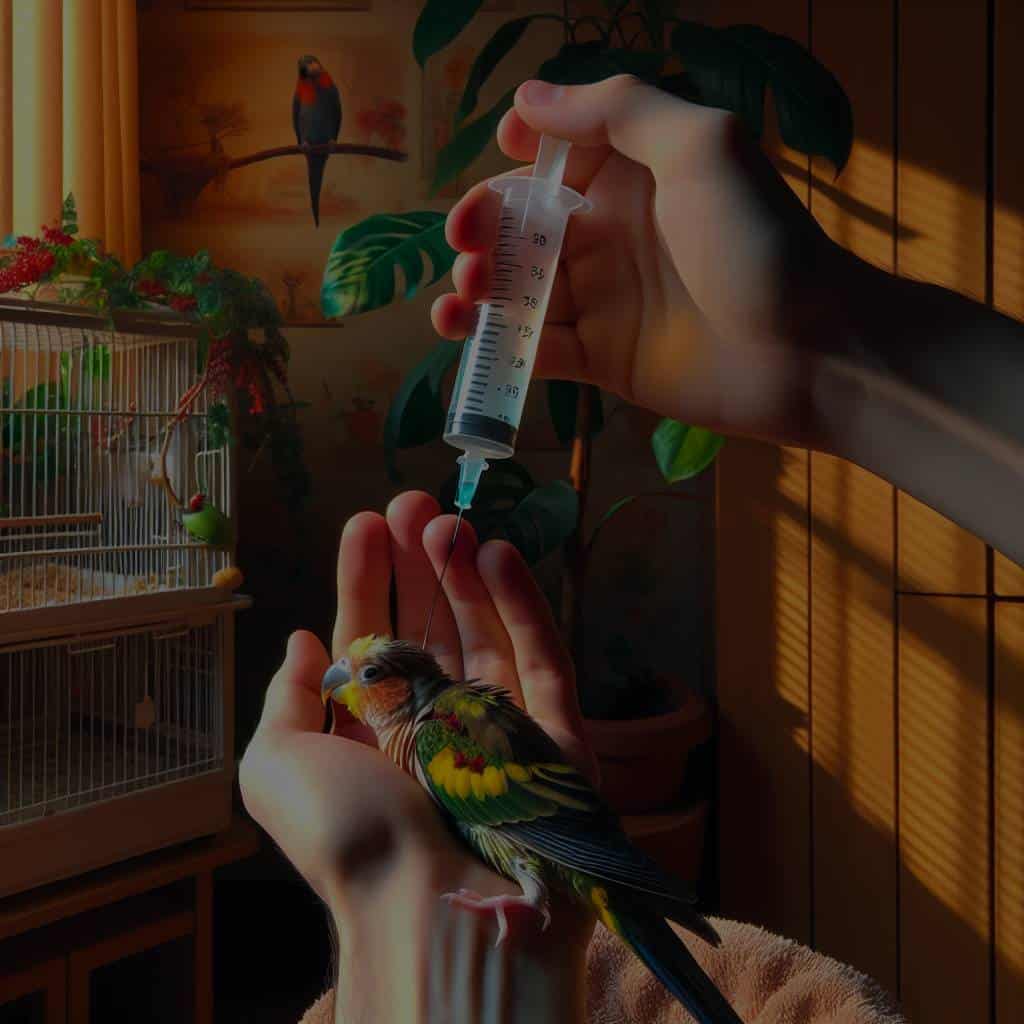What Are the Best Techniques for Syringe Feeding a Sick Pet Bird?

Caring for your pet birds involves more than just providing a cage, food, and water. It often requires a deep understanding of their health and well-being, particularly when they fall sick. During such times, birds can lose their appetite, and providing the necessary nutrition becomes a challenge. One effective method is syringe feeding, a critical care technique that may be recommended by your veterinarian. This article delves into the best practices for syringe feeding a sick pet bird.
Understanding When to Syringe Feed
Before embarking on the journey of syringe feeding your sick bird, it’s crucial to understand when and why this intervention is necessary.
Also to see : What’s the Best Way to Deal with a Cat’s Midnight Zoomies?
Syringe feeding is typically used when a bird is unable to eat on its own due to illness, injury, or post-surgery complications. In these cases, hand feeding with a syringe becomes an essential part of the bird’s care routine. It allows you to provide the right amount of calories and hydration, even if the bird’s natural feeding behavior is disrupted.
Recognizing signs that your bird may need syringe feeding is crucial. These signs can include a lack of appetite, rapid weight loss, dehydration, and general listlessness. If you notice these symptoms, consult your veterinarian immediately.
Also read : How to Socialize a Puppy with Other Animals in a Controlled Environment?
The Materials Needed for Syringe Feeding
Having the right materials on hand can make the process of syringe feeding your sick bird much easier.
First and foremost, you’ll need a feeding syringe. These are readily available at pet stores or veterinary clinics and come in various sizes. The size of the syringe will depend on the size of your bird; smaller birds will require smaller syringes, and vice versa.
Next, you will need a bird feeding formula. Commercially available bird feeding formulas are typically recommended, as they contain the necessary nutrients. However, your veterinarian may prescribe a specific formula depending on your bird’s condition.
Lastly, you will need a source of clean, fresh water to mix the formula and to hydrate your bird. Always use filtered or bottled water to avoid any potential contaminants.
Preparing the Syringe and Bird Feeding Formula
Preparing the feeding syringe and the bird feeding formula properly is critical for syringe feeding’s success.
The formula should be mixed with warm water, usually in a ratio recommended by the manufacturer or your veterinarian. The formula should be well mixed and free of lumps to ensure it passes through the syringe easily. Always test the temperature of the formula before feeding to avoid burns; it should be lukewarm, not hot.
The syringe should be clean and sterilized before use. Draw the formula into the syringe and check for air bubbles. Air bubbles can cause discomfort to the bird and may even lead to serious complications like air in the crop.
Administering the Feed
Administering the feed correctly relies on your ability to handle the bird safely and deliver the formula to the right part of the bird’s mouth.
When handling your bird, it’s important to remain calm and gentle. Stress can worsen their condition. Hold the bird in your non-dominant hand, leaving your dominant hand free to handle the syringe.
The syringe should be introduced from the left side of the bird’s mouth, aiming towards the right. This angle avoids the windpipe, reducing the risk of aspiration. Gently push the syringe plunger, allowing the bird time to swallow the formula.
Feed your bird small amounts at a time, pausing frequently to allow for swallowing and breathing. Remember, your bird’s health and comfort are paramount. If the bird appears uncomfortable or distressed, stop feeding immediately and consult your vet.
Monitoring Your Bird After Feeding
Monitoring your bird after each feeding session can provide critical insights into their recovery progress.
Look for signs of discomfort or distress, such as panting, drooling, or coughing. These might indicate problems like aspiration or an overly full crop. Also, monitor your bird’s weight regularly. Steady weight gain usually signals that your bird is absorbing the nutrients from the feed.
Always remember, syringe feeding should only be a temporary measure. If your bird does not show signs of improvement or return to regular feeding habits, seek advice from your veterinarian. Your ultimate aim should be to return your bird to a state of health where it can eat independently.
In conclusion, syringe feeding a sick pet bird can be a challenging but necessary duty. With patience, care, and attention to detail, you can ensure your feathered friend receives the crucial nourishment they need during their recovery period.
Recognizing Signs of Illness and the Need for Syringe Feeding
Recognizing signs of illness and the need for syringe feeding is an important part of pet bird care.
If your bird is acting abnormally, shows signs of rapid weight loss, or seems generally listless, these could be signs of an underlying health issue. Birds can mask their illness due to their survival instincts, making it challenging to identify when they are unwell. However, a noticeable change in their behavior, physical appearance, or eating habits can be a red flag.
One of the main reasons a bird might need syringe feeding is due to a loss of appetite, which can be caused by illness or injury. For example, a bird might stop eating due to a disease affecting its digestive system, a respiratory infection making it difficult to breathe while eating, or an injury to the beak.
Syringe feeding allows you to ensure your bird receives the necessary nutrients when it’s unable to eat independently. This critical care technique can be vital for your bird’s recovery process, as it allows you to control the amount and frequency of food intake.
Remember, always consult a vet if you notice any signs of illness or behavioral changes in your bird. Never attempt to force feed your bird without professional advice, as this might cause more harm than good.
Helpful Tips for Syringe Feeding Your Bird
Caring for a sick bird and learning to syringe feed can be a challenging task, particularly for pet parents who may not have done this before. Here are some helpful tips to make the process easier and more efficient.
Firstly, you should understand that birds are not naturally adapted to syringe feeding, and it might take some time for your bird to adjust to this new feeding method. Patience is crucial during this process.
A calm and quiet environment can help reduce stress for your bird during feeding. Avoid sudden movements or loud noises that might startle your bird. In fact, talking to your bird in a soft, soothing voice can help keep it calm.
The angle at which you insert the syringe into your bird’s mouth is critical. Always aim for the back of the bird’s throat, avoiding the windpipe to reduce the risk of aspiration.
Pay close attention to your bird’s reactions during feeding. If your bird shows signs of discomfort, stop feeding, and consult your vet. These signs could include choking, coughing, or struggling to breathe.
After the feeding session, keep your bird in a warm, comfortable space where it can rest and digest the food. Monitor your bird for any adverse reactions or changes in behavior post-feeding.
Lastly, remember to clean and sterilize the feeding syringe after each use to prevent the risk of infection.
Conclusion
In summary, syringe feeding a sick pet bird can be a daunting task, but with the right information and careful handling, it can be an effective way to provide critical care for your feathered friend. It is crucial to recognize the signs of illness and understand when syringe feeding is necessary. Always consult your vet about your bird’s condition and follow their guidance on how to properly syringe feed your bird. With patience, diligence, and proper care, your bird will hopefully recover soon, returning to its usual, independent feeding habits. Always remember, your bird’s health and wellness should always be your top priority.
